“I hope I’m not ruining your beautiful silk.” Juggling the reed in one hand, the shuttle firmly in the other, and a foot on each of the unstable bamboo pedals, I felt like a clumsy octopus with too many limbs to coordinate. Next to me, a woman was gracefully threading ocean-blue waves on the warm, off-white drape stretched across the frame. Her fingers danced with the strands to the whooshing music of the elliptical shuttle sliding across the myriad of filaments.
“Don’t worry, this is the practice cloth for the tourists. Our master weaver will fix it later.” Ken, my local guide, reassured me with a smile, which gave me just enough courage to try a few more rounds at the clunky loom. Tangled in precious silk threads in my pursuit to learn more about the timeless art of Lao silk, I felt like there was more to it than making pretty scarves.
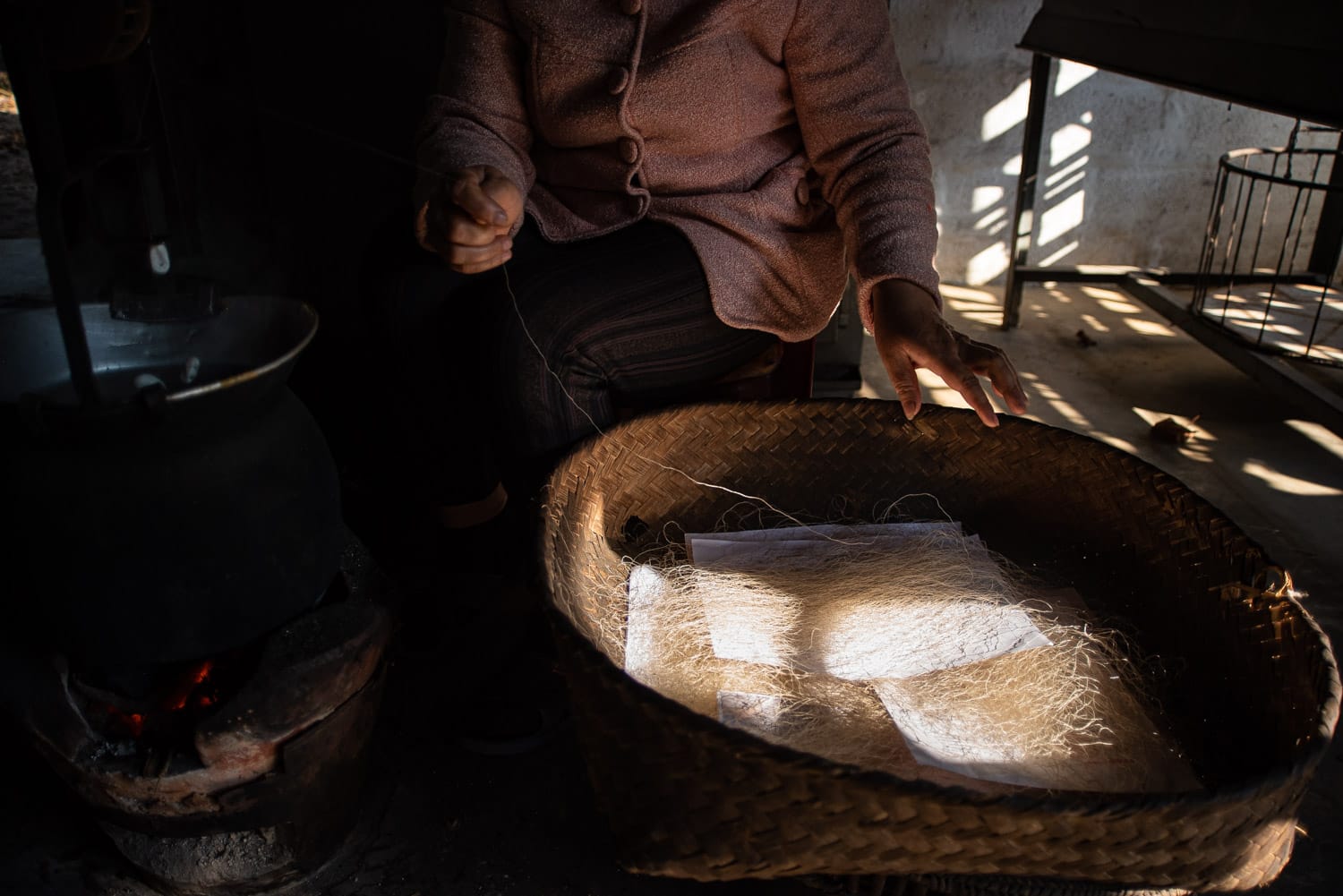
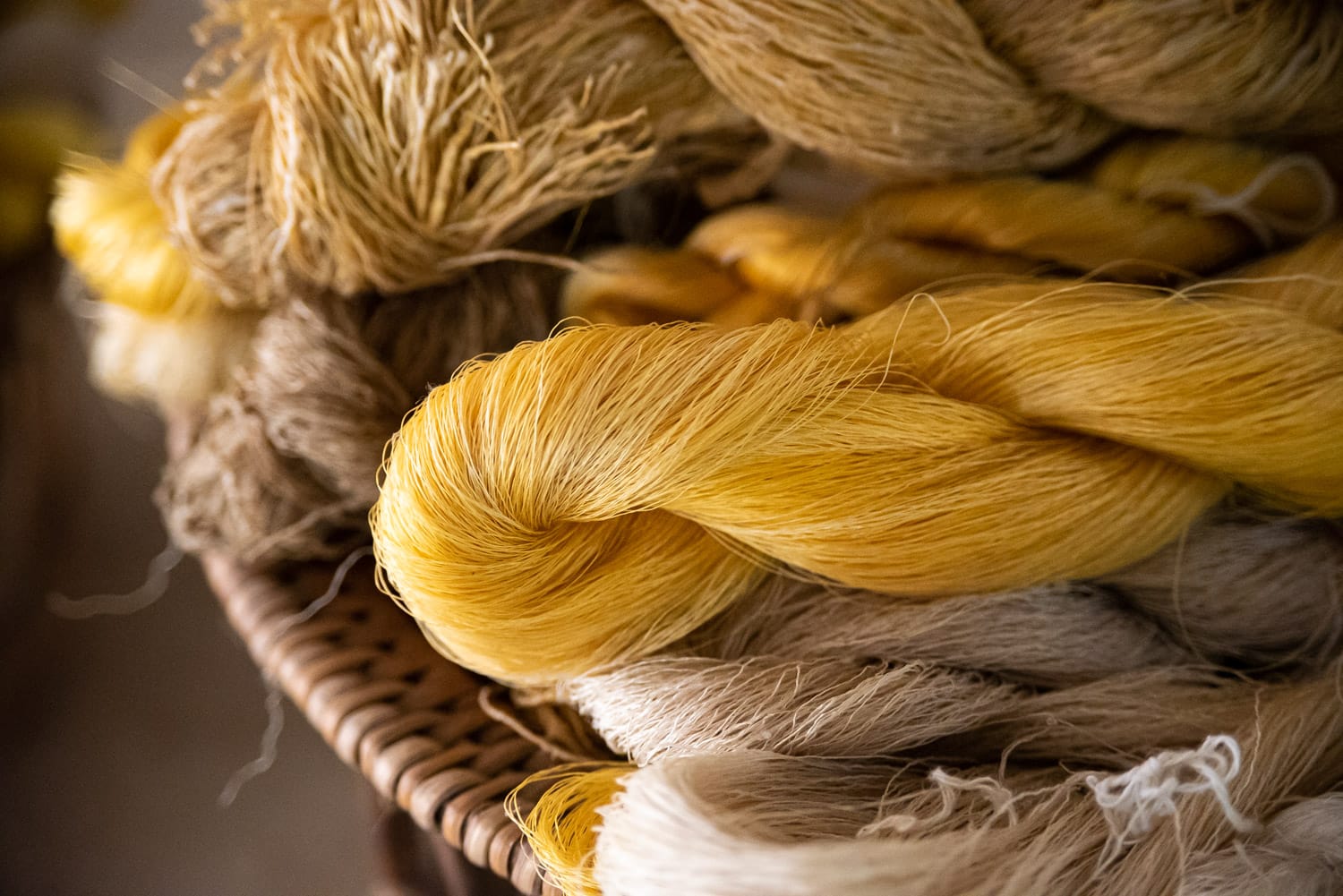
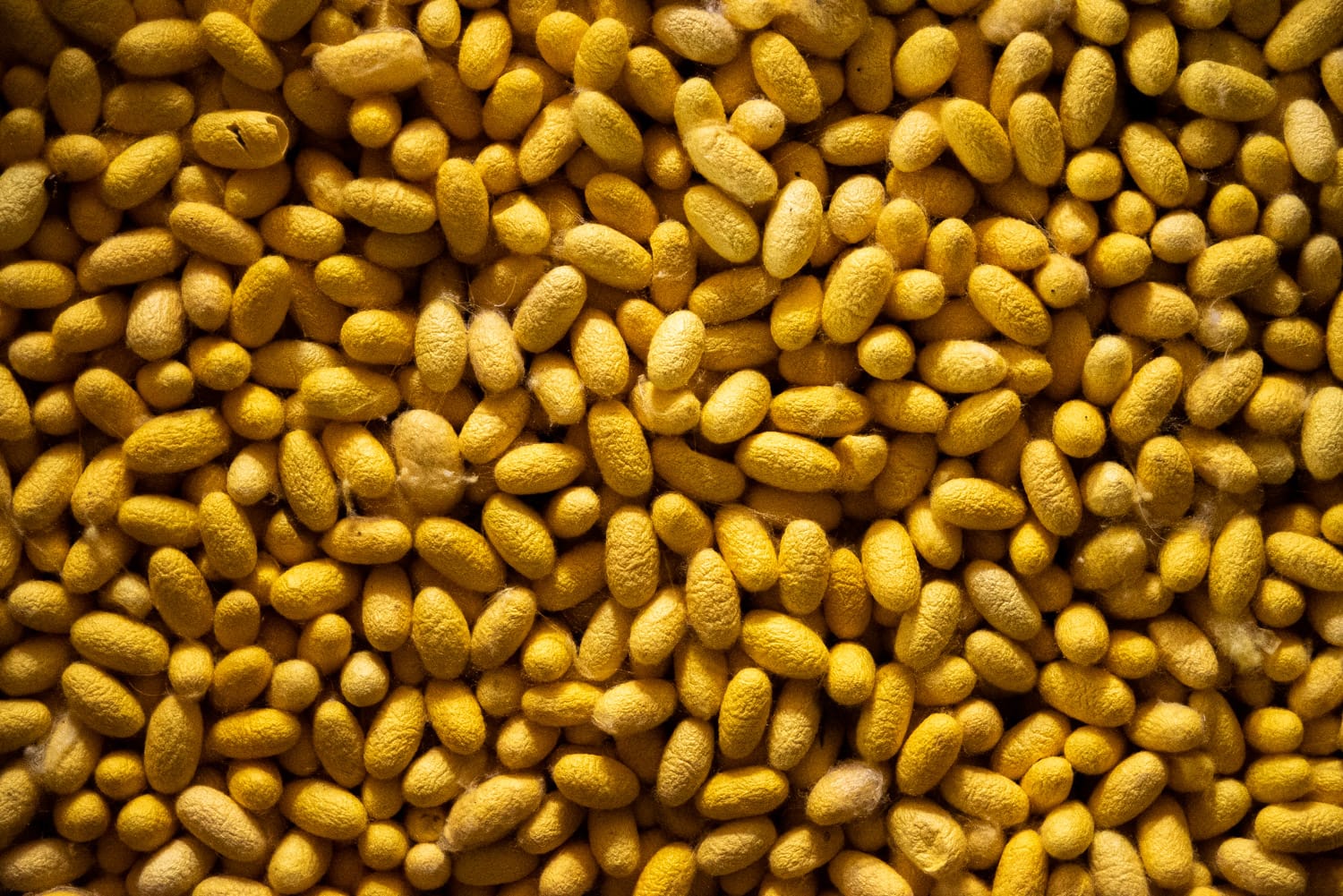
In the previous week, while roaming around the unpretentious dirt roads of Phonsavan in northern Laos, what caught my eye were not the bright orange robes of monks, the straw hats dotting the rice fields, or the smoke surrounding street food carts. Amongst these humble everyday life scenes, demanding my attention, were the ornate, intricate, colorful works of art that women wore so casually. Precious silk tube skirts, sinh, poking out of oversized t-shirts and blouses so elaborate I’d only seen at fancy weddings topping jeans and leggings.
Meandering on my scooter through patches of lush emerald jungle and quaint villages, I’d seen women on shady front porches effortlessly working their looms while chatting with their neighbors. In the bustling local market, alongside peculiar vegetables and crowing roosters, I could touch silk as soft and smooth as delicate peony petals from stalls displaying a rainbow of garments.
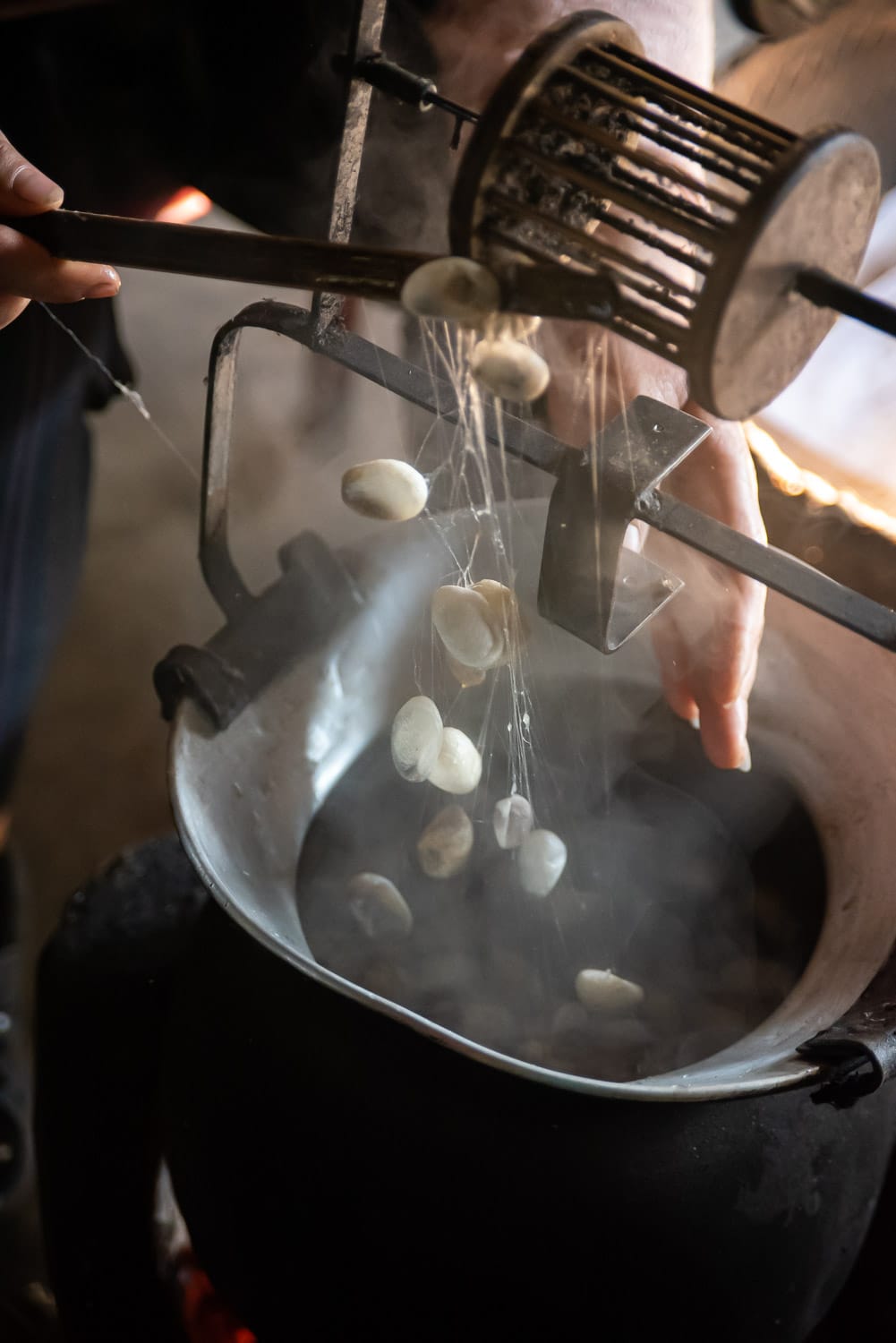
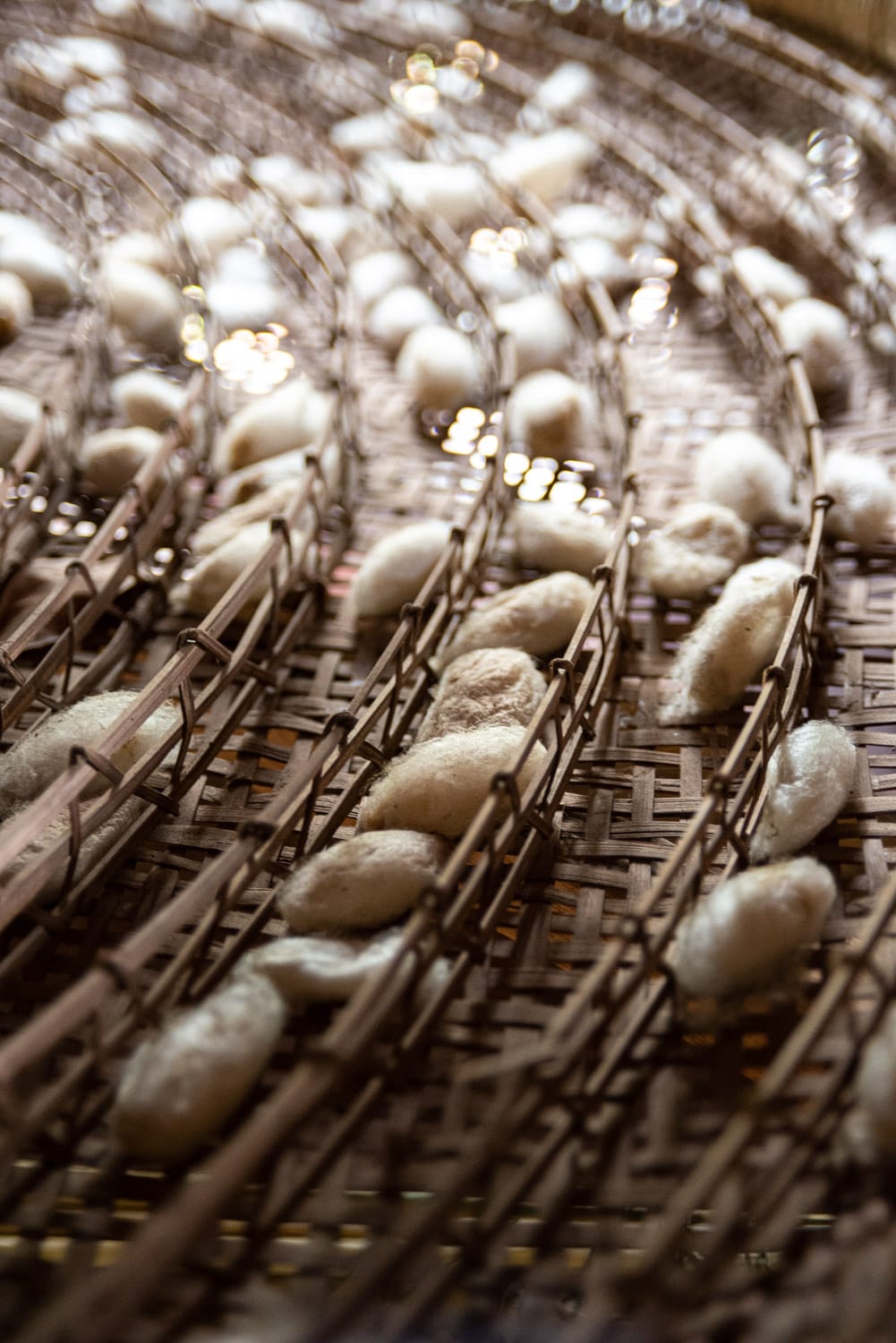
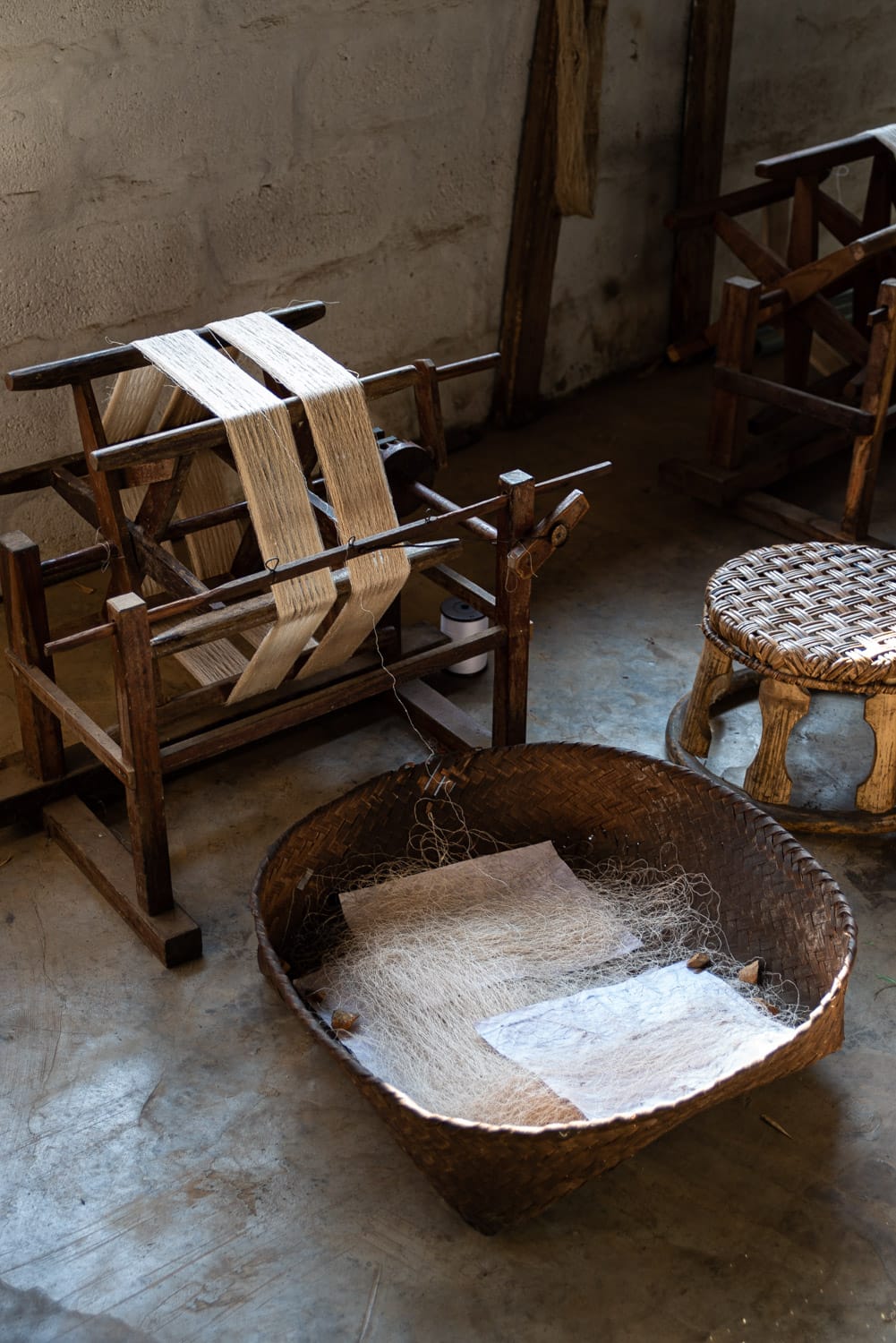
Photos by Giulia Verdinelli
Fuelled by curiosity and wonder, I asked Ken to help me explore the roots of the Lao tradition of silk crafting. I was determined to understand the people behind it and the intricate narratives of their lives and culture. As I traced the threads of this living legacy, I found a world where silk is not just a commodity; it is an art form that weaves together heritage, spirituality, sustainability, and a sense of community.
Historically, it was the custom of rural families to teach young women every stage of the silk production process. It’s a labor of love and patience, with each piece taking weeks and even months to complete. These time-consuming and elaborate techniques were almost completely abandoned with the introduction of cheap fabrics from neighboring countries. Many women lost not only their craft but also their jobs and independence.
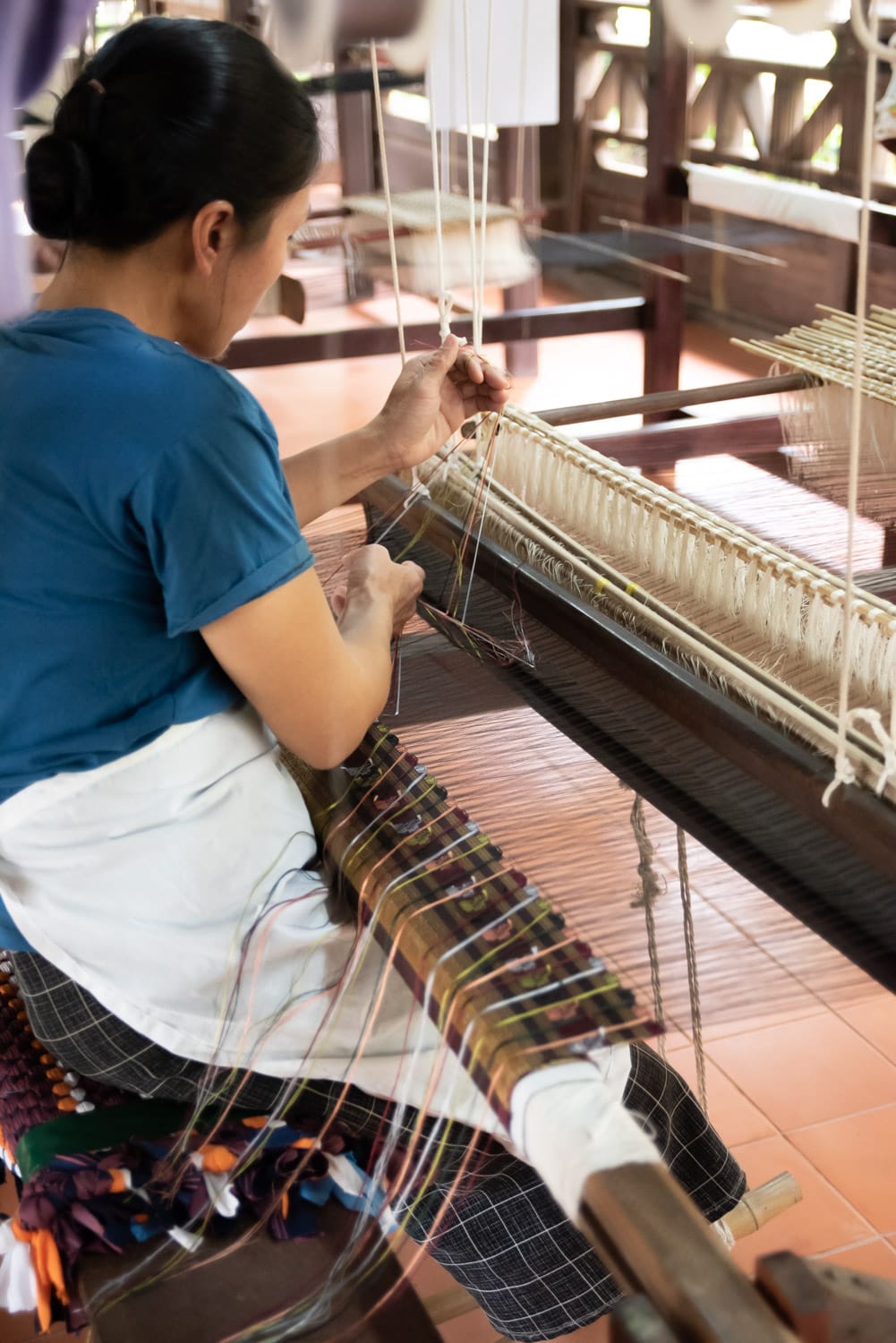
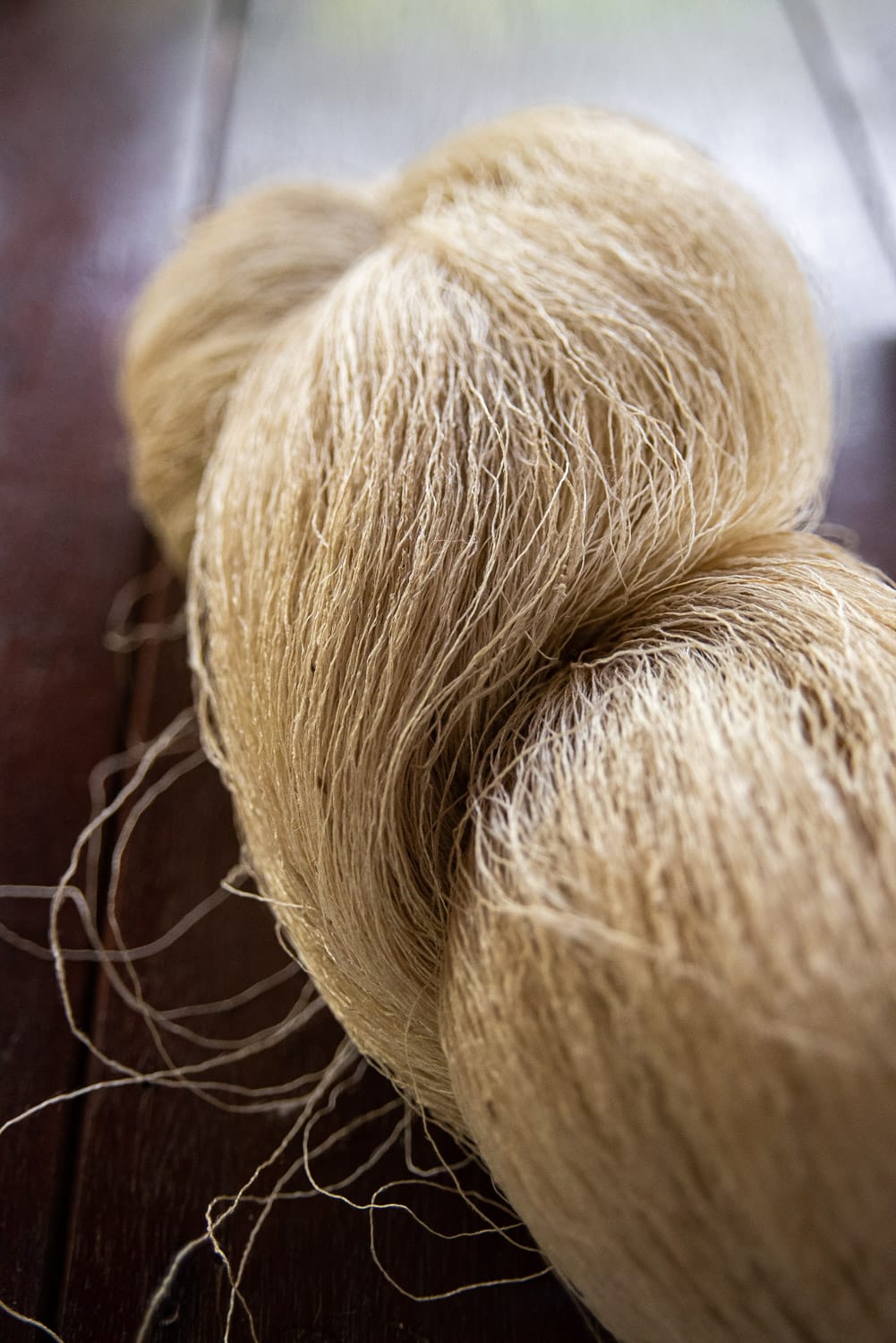
Photos by Giulia Verdinelli
“Silk weaving is a beloved Lao tradition. I used to watch my grandma and the women in my village do it every afternoon. But then, it got easier to buy it from Vietnam, so they stopped,” Ken explained as we were driving to Mulberries, an organic silk farm and one of the main organizations whose mission goes beyond the production of the precious filament.
In the late 70s, a handful of women started a silk weaving cooperative as a way to gain economic development for their villages. Since then, the Mulberries cooperative has grown to employ 3,000 farmers, weavers, and artisans from over 200 village families. It’s a collective effort for the revival of a way of life, the preservation of ancestral culture, the empowerment of women, the creation of an economic lifeline for remote villages, and a promise of sustainability for future generations. Through its holistic training programs, Mulberries cultivates a fertile environment for women to learn the valuable skills of weaving, a strand that keeps them tied to their centenary heritage.
The Lao have traditionally transmitted their folk stories, legends, and oral history by weaving each thread into intricate patterns and motifs on their tapestries. Many symbols, such as elephants, diamonds, temples, and flowers, reflect the Lao spiritual beliefs and have profound significance beyond their pure ornamental beauty. Some represent wisdom, fertility, and creativity and are believed to bring prosperity and good luck to the owner.
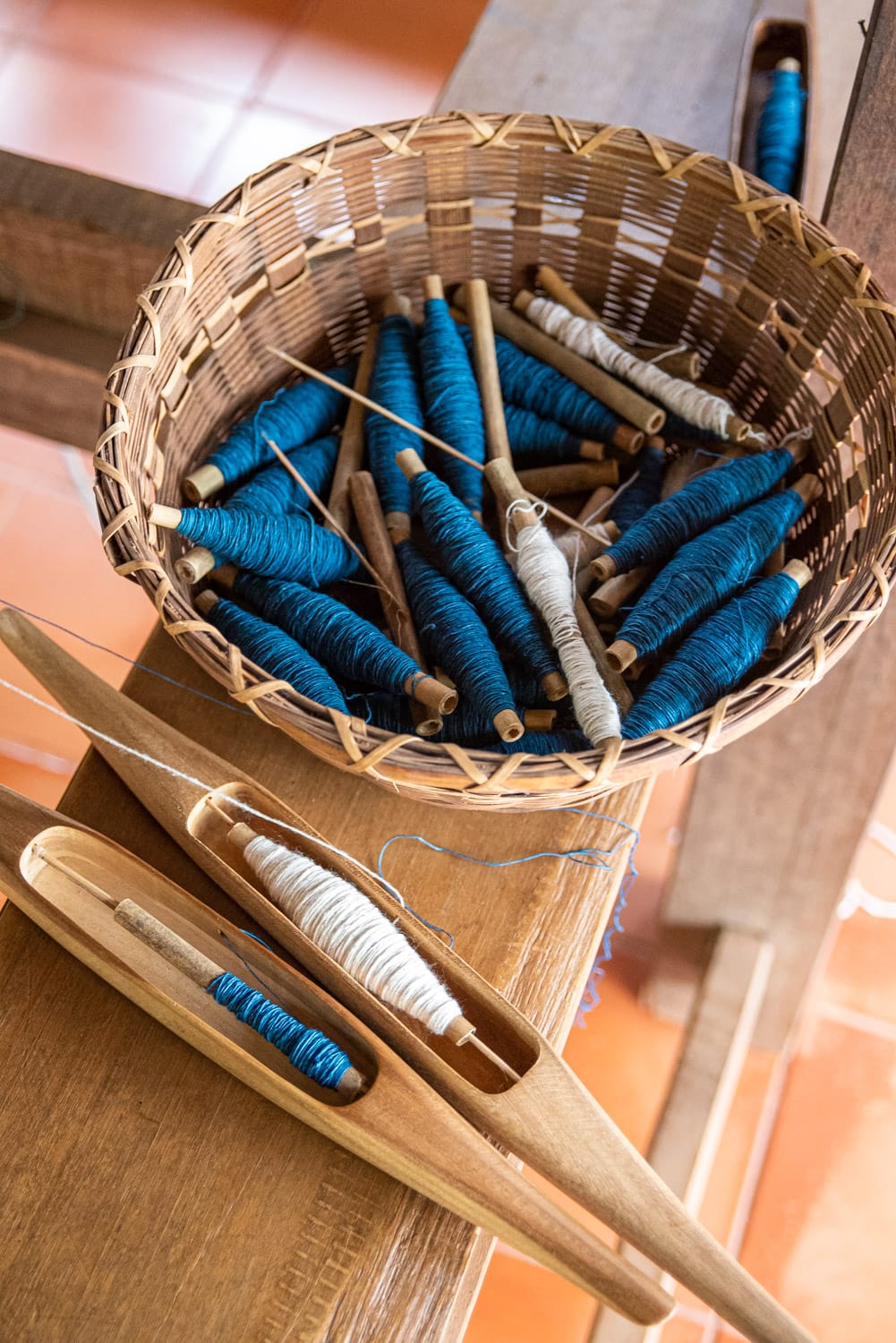
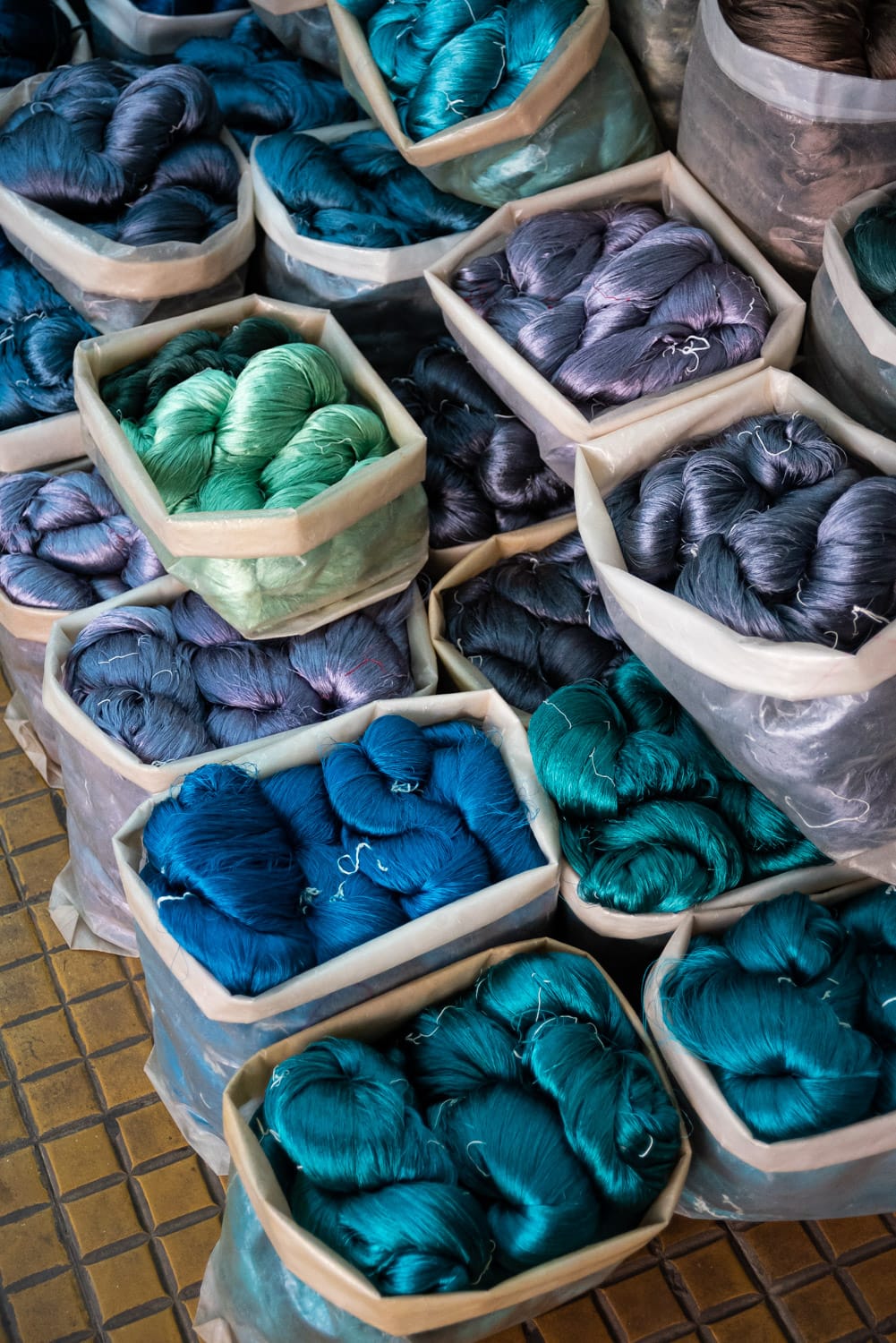
The legend of Naga, a giant mythical serpent god which is believed to be the ancestor of the Lao people struck a chord with me. From its home in the Mekong River, it supplies water for growing rice, offering prosperity to the people who depend on it. The saying “tam sinh, tam nark”—wave the sinh (traditional tube skirt), wave the Naga—entwines two of the core aspects at the soul of the Lao culture.
As women become messengers of history using their silk canvases, they also gain empowerment and independence through a stable, dignified, and fulfilling source of income for themselves and their villages.
Mulberries and other organizations employ women at every stage of silk production, from farming the mulberry trees to nurturing the cocoons to making and dying threads to weaving. This multifaceted approach enables them to return to their communities as knowledgeable contributors, capable of sharing expertise and enriching the collective prosperity of their villages. But these institutions’ efforts don’t stop at local impact; they create a global marketplace for these exquisite creations and put Laos on the map of textile excellence. They connect Lao village producers with a world hungry for authentic art, where the uniqueness and imperfection that only a person’s hand can bring to a piece of fabric are a testament to human genius.
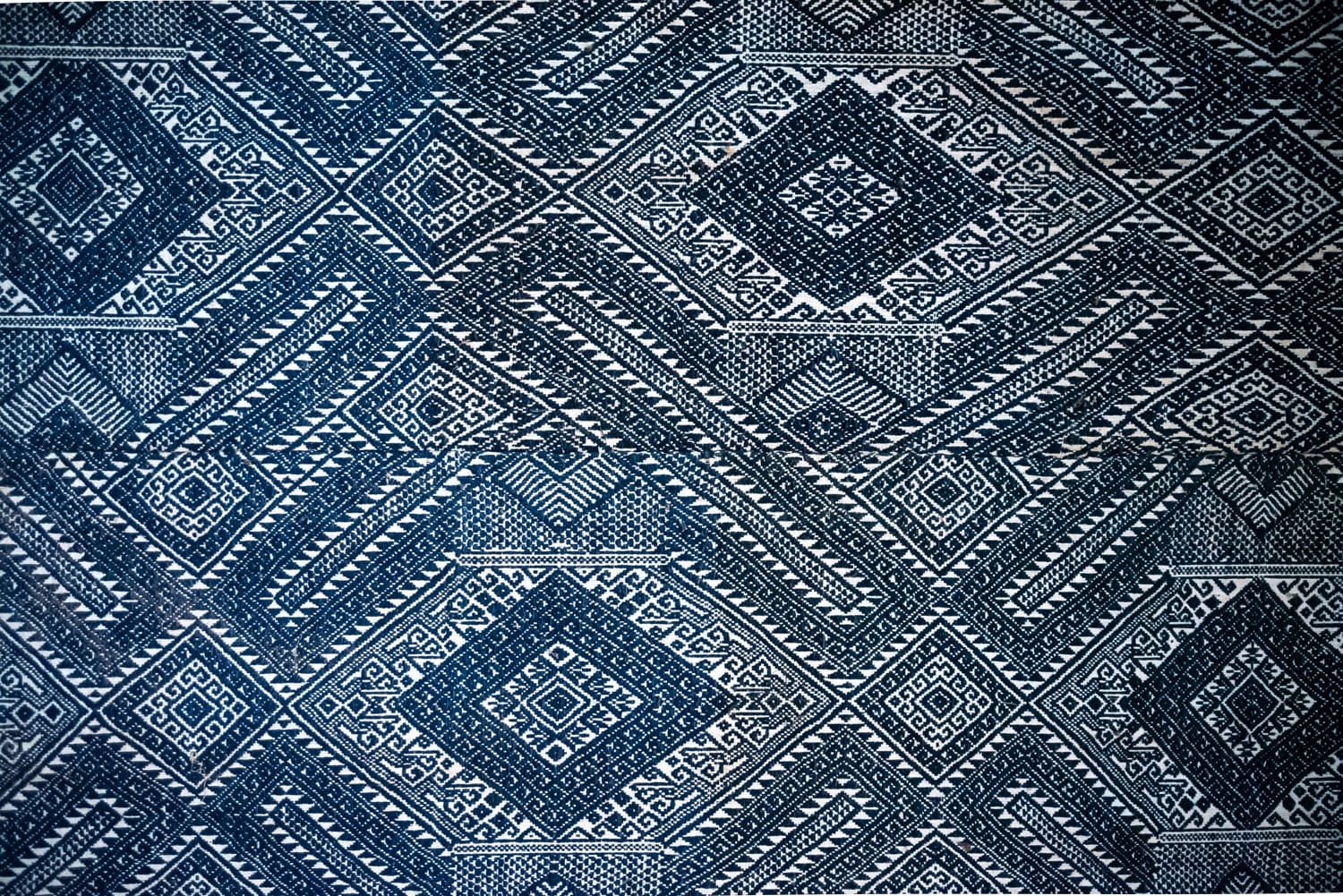
In the Mulberries workshops in Phonsavan and at the Lao Textile Museum in Vientiane, amongst braided skeins hanging in the sun and terracotta jars full of potion-like mixtures, I witnessed firsthand another fundamental aspect of their mission: teaching future generations the importance of sustainability by transforming waste into treasures.
It all starts with the humble Mulberry tree and continues with every step of the process, each one showcasing the Lao people’s deep respect for their land.
Mulberry leaves are fed to silkworms which twirl the satin silk filaments into a cocoon, a bargain meal for such a priceless service. The mulberry fruit is a favorite in jams and desserts, while the bark makes fragrant tea. After the pupae are separated from the cocoon, they are enjoyed as a healthy source of protein. The cocoons are then spun to get the raw threads, and what remains is a soft exterior part that finds a new home in plushy pillow stuffing. Also, some of the pupae are raised to the moth stage so they can lay the eggs for the next generation of silkworms, making the whole process more sustainable. Even the water used to clean the raw silk is reused as a precious skin moisturizer or mixed with other natural ingredients to make vibrant dyes.
Silk is not just a commodity; it is an art form that weaves together heritage, spirituality, sustainability, and a sense of community
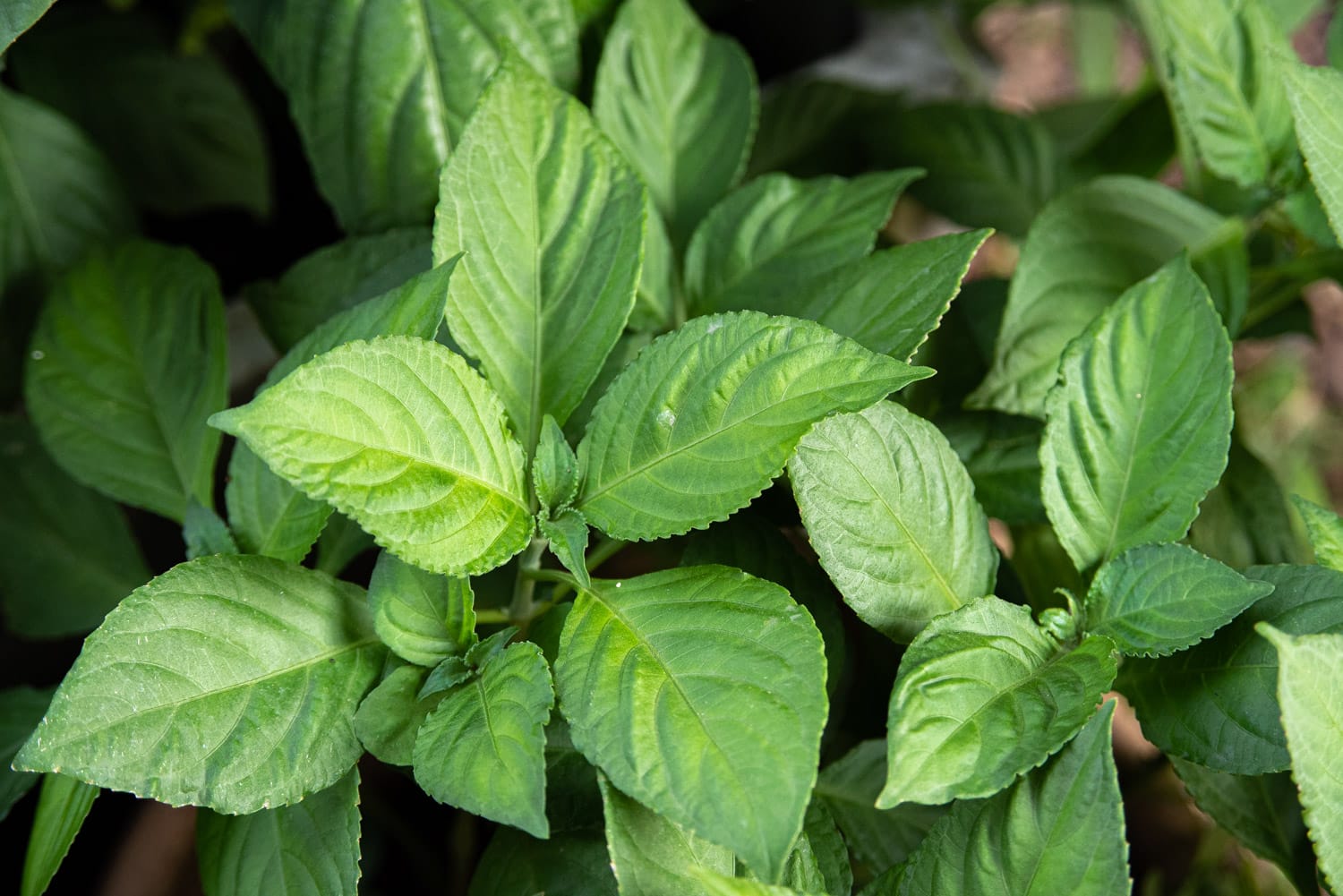
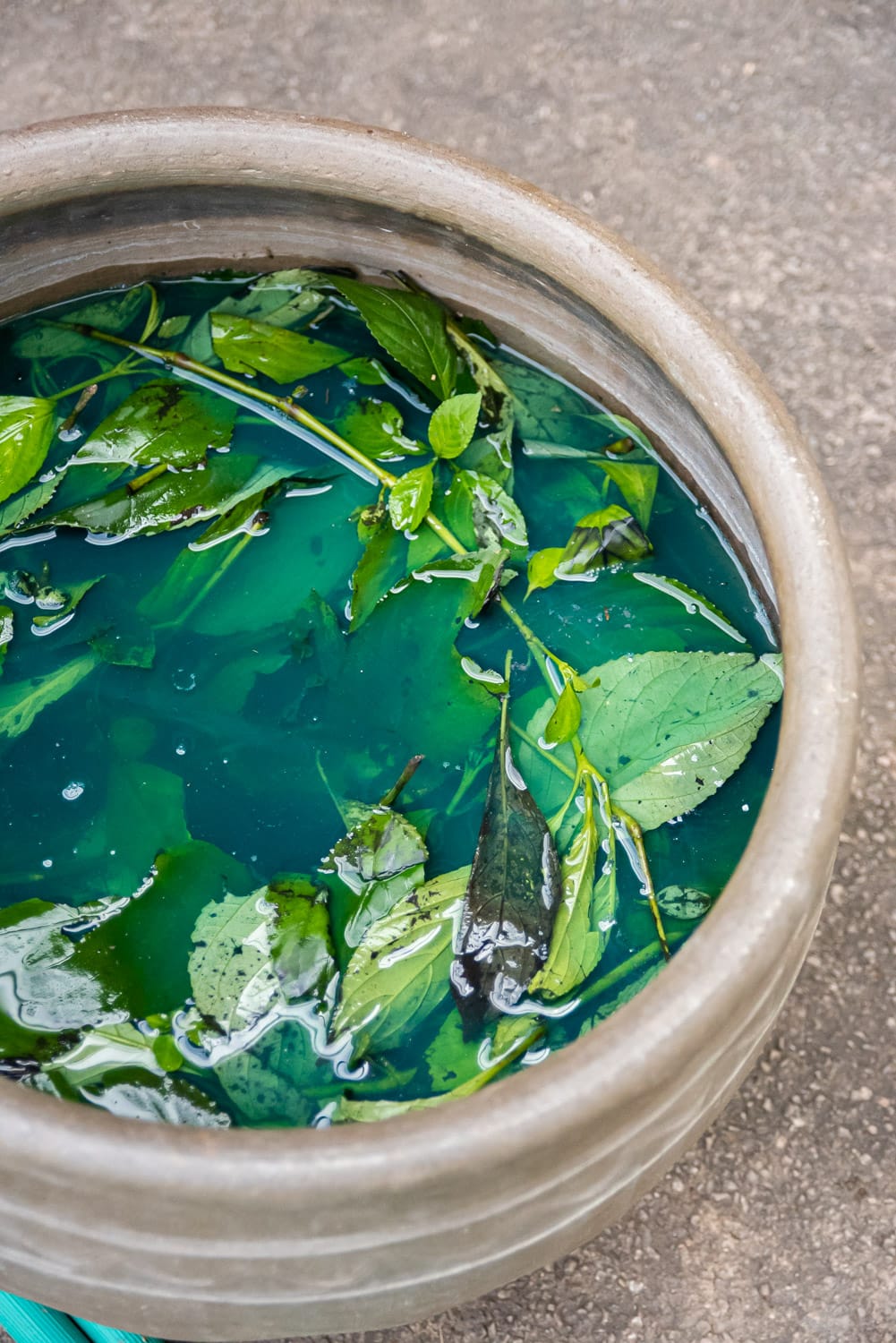
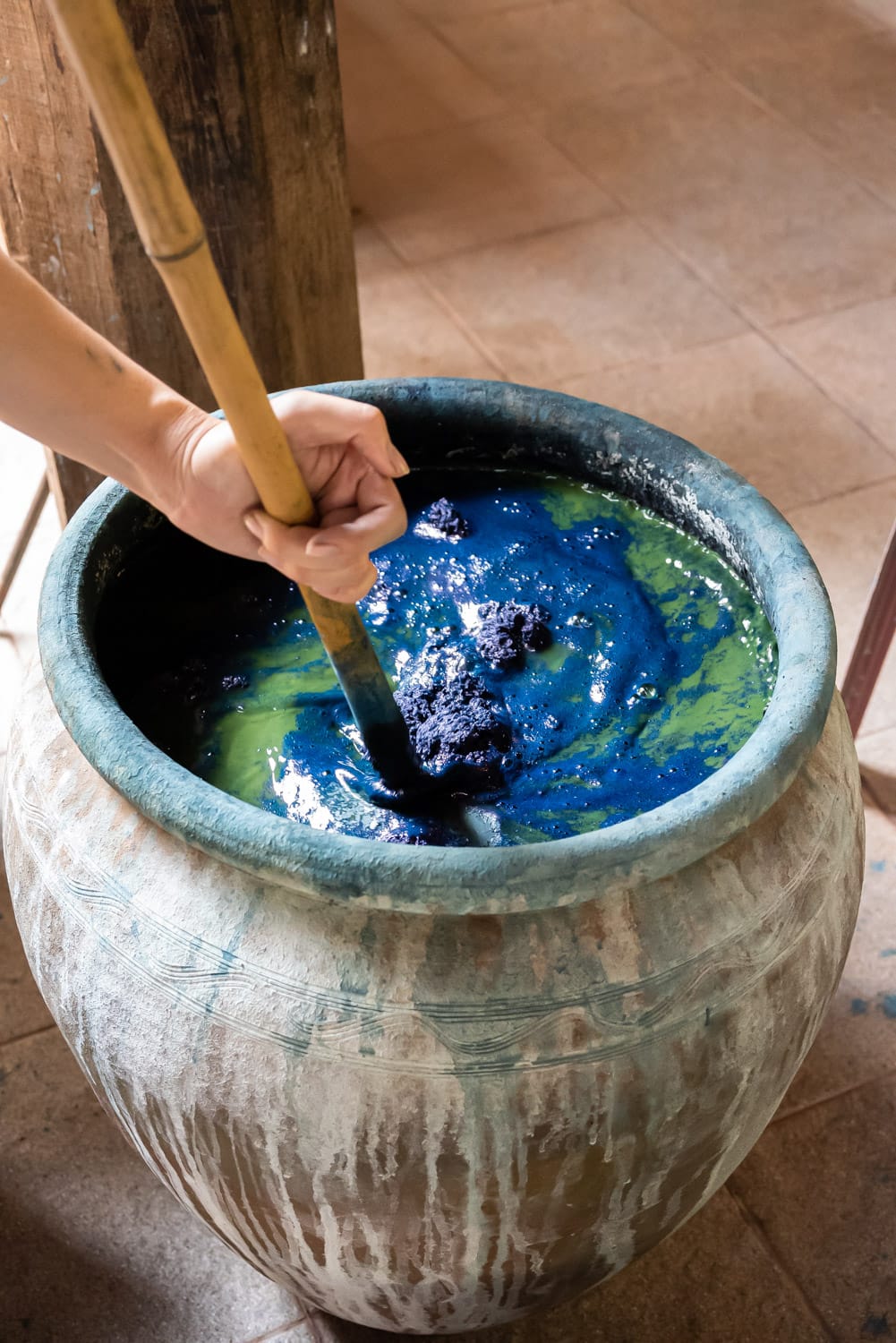
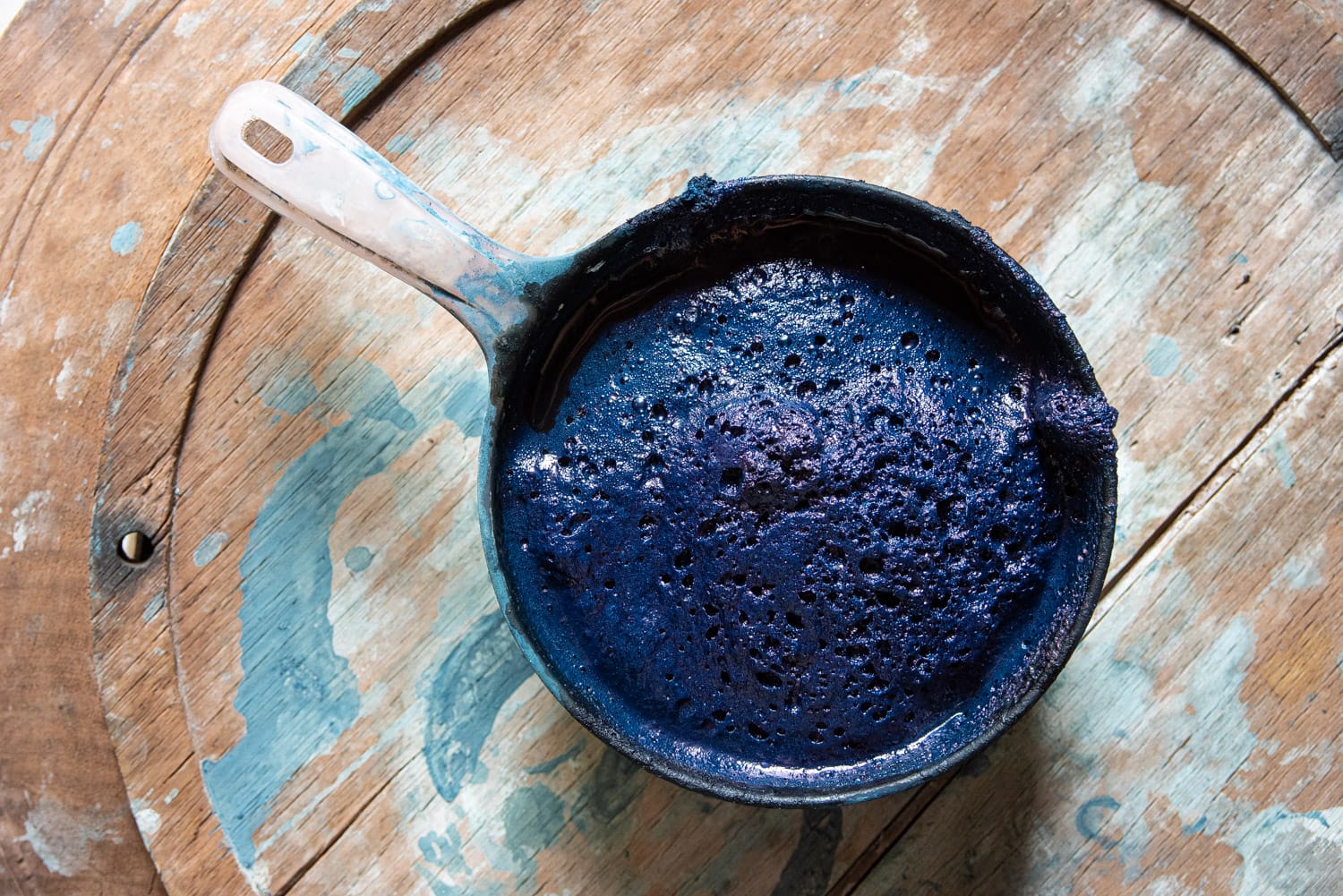

Photos by Giulia Verdinelli
Stepping into the dying room feels like visiting an alchemist’s laboratory. Herbs, bark, and spices are stacked on shelves, and the floor is speckled with spills from jars of deep indigo blue, rich tamarind orange, and muted coffee brown liquids. Once the fabric has been woven, the scraps are recycled as accessories, home decor, and even quirky packaging. While weaving the glimmering threads line after line, surrounded by ribbons of colorful silk dancing in the wind to create a kaleidoscopic effect, the idea that my unskilled performance would not be a waste of material reassured me.
In the looms of Laos, I connected with more than a fabric. I discovered a culture that breathes life into every fiber of its people, braiding community empowerment, sustainability, and a future interlaced with tradition and progress.
A version of this article appears in print, in Issue 3 of Álula Magazine with the headline: “Lao Silk : A Tradition Woven Into Generations”.

